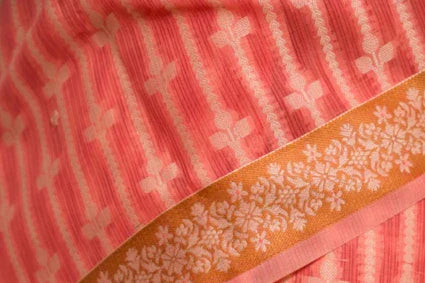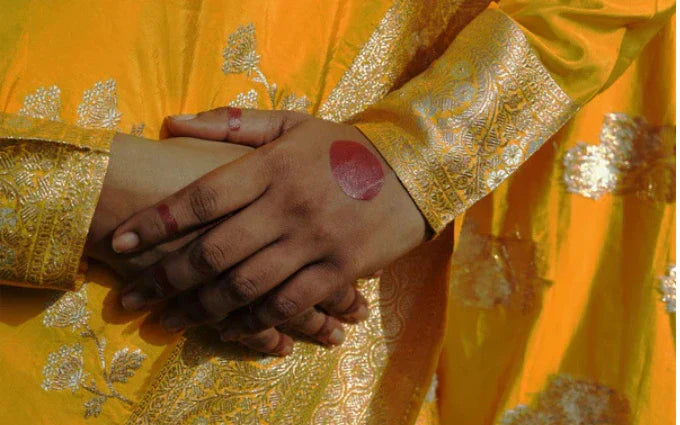
Ironing Sarees Without Damaging the Fabric
Nothing like wrapping some fresh ironed saree. The sharp stitch, the diagonal drop of the cloth, all this contributes to the eternal class of the elegance. However, the idea of ironing saree, particularly saris made of delicate fabric types and very intricate work quality can be swamped by a feeling of overwhelming responsibility. It is ok, we can teach you this necessary skill!
Why Is It Important to Know How to Iron Different Fabric Sarees?
As you can not apply the same shampoo to all kinds of hair, so should you not apply the same ironing technique to all types of saree.
-
Fabric Integrity: Various fabrics will respond to heat in different ways. Awareness of the correct temperature will avoid the falling gut of burning, scalding, and scalding and coltivation of the material.
-
Longevity: The right ironing methods can preserve texture and shape, colour and finish of the saree making it last many years yet.
-
Pleat Perfection:the most significant part of having a gorgeous look is having a clean crispy pleat in a drape and one would have to give special attention to it based on the cloth run.
Pre-Ironing Preparations Tips
-
Check the Label:It is very important to begin with checking the care label of your saree. It will provide you with the optimum temperature settings and instructions.
-
Clean board or surface: should be clean of dirt or any lint that will be on saree.
-
Apply Pressing Cloth:In the case of delicate fabric; a pressing cloth in between the iron and saree should always be a thin layer of cotton otherwise it is referred to as a pressing cloth. This offers a barrier.
-
Spray Bottle: To ensure an easy process of Ironing, have a spray bottle of water so that the cotton or the linen saree that needs to be ironed can be slightly wet.
Shop The Look!
|
|
|
|
|
|
|
|
|
How to Iron Specific Fabrics Sarees?
-
Low/Medium temperature:Adjust your iron to a low to medium temperature since high temperature would break off the fibers of silk.
-
When Ironing the saree Forward: It is important to always iron a silk saree on the poster side in order to save the shine and the girly surface.
-
Use Pressing Cloth: To be more safe, put on one almost thin cotton cloth on top of a saree before ironing.
-
No Steam:TVA-Silk This should not be steamed, but it can leave water marks.
-
Begin with Pleats Perfect ironing of sarees pleats:Saree pleats can be ironed just with the aid of taking up the pleats and pressing them down with an iron.Here a little more pressure may be applied to fix the creases.
Cotton & Linen Sarees
-
High Heat: These strong fabrics have the ability to withstand high heat. Turn on your iron to cotton or linen.
-
Prepare the Fabric:Ideally spray saree with a small amount of water and then iron. This assists in the removal of wrinkles in a better way.
-
Iron on the Right:It is possible to iron on the right side of the cloth.
-
Press with a Pressure: Intense pressure on the skin bandages the obstinate lines.
-
Pleat Perfection: Learn to iron saree with pleats by folding out and then moistening the pleats with hand then stamping hard and smooth with the iron.Sharp creases are formed by tapping the top.
Chiffon, Georgette, and Synthetics Sarees
-
Very Low Heat: These are fabrics which are extremely heat sensitive. Options Turn on the least possible on your iron.
-
Enhance Pressing Cloth: Pressing cloth is an undertaking with such sensitive materials to avoid melting urning of the material.
-
Light Strokes: Swift strokes need to be light. Do not leave the iron in one place too long.
-
Inserted Iron on the rear side: Inserted iron on the reverse side to safeguard the fragile fabric layer.
-
No Steam:Steaming There are dangers of losing the shape to these fabrics.
Heavy Work Sarees
-
Guard the Trimmings:It is always good to place a towel or a cottony or spongy cloth on the ironing table before putting the saree.
-
Iron on the back: It is the most important trick. Beads can be melted, embroidery flattened or ruined during ironing done on the embellishments.
-
Low Heat:
-
Iron Small Sections: Segment Do the work in segments, taking care to press the fabric against the dressings.
-
No Direct Contact:It is necessary to ensure that the iron does not come directly in contact with the work.
How to Care for Sarees After Ironing?
-
Air it out:When the saree is cooled properly it airs out then it can be folded. This stops the wrinkles in going backwards.
-
Folding: This should be folded correctly along the creases of the saree. One must not do the same semblage in order to avoid persistent creases.
-
Store Properly:Put your saree in a breathing bag or a muslin fabric. Use plastic bags that cannot be used as a way of trapping moisture.
Conclusion
Ironing a saree is an acquired talent that is all about patience and knowledge regarding material. These are just but a few tips to consider so that you will be in the position to make sure your beautiful sarees at Huts and Looms are in worthy shapes so that when it comes to occasion time, all you need to do is to throw on as usual. Now, then, go, and put on that saree that you’ve so carefully ironed!












